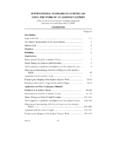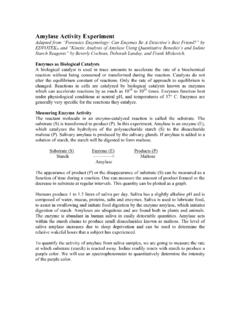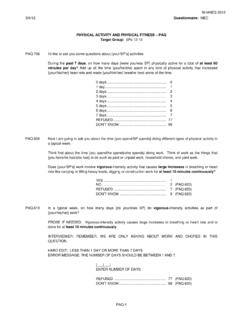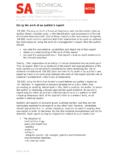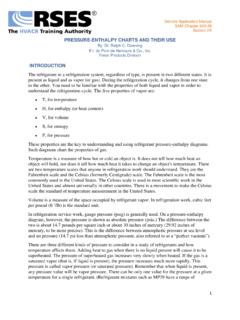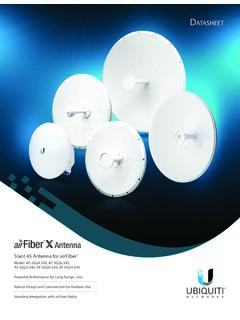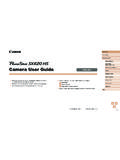Transcription of SAFE SOLDERING WORK PRACTICES - ETA Safety
1 SAFE SOLDERING work PRACTICES This guidance document is designed as a reference for safe SOLDERING work PRACTICES at Lawrence Berkeley National Laboratory (LBNL). Most SOLDERING done at LBNL is electronic hand SOLDERING , using a SOLDERING iron or gun. SOLDERING can also be done using a torch, for example, when connecting copper pipes in plumbing systems. In many cases SOLDERING is done only occasionally, and use of best work PRACTICES including good ventilation provides adequate protection. It is important to request an assessment of the hazards if there are any health and Safety concerns. SOLDERING is a group of joining processes that produce a joining of materials by using a filler metal (solder) with a temperature not exceeding 840 F (450 C).
2 The metals being joined are heated to the SOLDERING temperature but they do not themselves become liquid; only the solder becomes liquid. Because temperatures in SOLDERING with a torch may approach or exceed 840 F (450 C), these processes may also be termed brazing, but they are often described as hard SOLDERING or silver SOLDERING . Both SOLDERING and brazing are distinct from welding, where the materials being joined are also made liquid to some extent, in the joining process. In addition to the solder and the base metals, SOLDERING operations may involve the use of fluxes, coatings, and cleaning agents. Both electronic SOLDERING and hard SOLDERING present potential exposure issues via airborne, skin contact, and hand to mouth routes, from both the products used or by-products of the SOLDERING process.
3 There are physical hazards from heat, and in some cases from open flame. To ensure employee awareness of the hazards and safe work PRACTICES when SOLDERING , this summary, with suggested resources, has been prepared for use by workers and supervisors of SOLDERING operations. POTENTIAL HAZARDS Fumes from heated solder constituents: Lead and tin are the primary constituents of most solder currently used in electronic SOLDERING at LBNL. Solder composition may vary but is commonly 60-63% tin and 37-40% lead. Because of the relatively low temperatures in electronic SOLDERING , fumes from these metal constituents themselves are not normally a concern. When solder contains a core of 1-3% flux, appropriate controls should be used.
4 This issue is addressed in the discussion of fumes from fluxes. Lead, tin, and other solder materials are discussed in more detail in the section on solder constituents. Fumes and decomposition products from heating of oil, paints, or coatings present on the surfaces heated during SOLDERING : Lead or volatiles from paint, or residue from solvents used in surface preparation, can produce toxic fumes, gases, and vapors. This may occur even when the coating is on the back of an object being soldered, not directly on the soldered surface. Oils, paints, and coatings should be removed from surfaces to be heated during SOLDERING , to prevent volatilization of these products. Teflon (PTFE, or polytetrafluoroethylene) materials, or surfaces coated with Teflon materials, may evolve fumes when heated above 625 F (450 C).
5 Teflon decomposition products consist of large numbers of ultrafine particles and low concentrations of gas-phase compounds. Exposure to Teflon fumes can cause an influenza-like syndrome (polymer fume fever) and severe toxic effects such as pulmonary edema, pneumonitis, and death. work with Teflon materials should always be done with local exhaust ventilation systems. Fumes from fluxes: Flux allows the solder to flow more smoothly. SOLDERING may involve the use of flux paste or liquid, or the solder itself may have a rosin core. When this flux is heated it may be volatilized to a gaseous state. While fume strictly speaking refers to volatilized solid material that has then condensed in the air, the term is loosely used to include other airborne products including gases and vapors that may be produced in SOLDERING .
6 Because SOLDERING fume generally rises vertically, it is easy for it to enter the breathing zone of the operator, unless ventilation Safe SOLDERING work PRACTICES rev 12/09/2010 1 is used. Even those who solder only occasionally should use fans or local exhaust ventilation to minimize their exposure to SOLDERING fume. Rosin Fluxes- Contact with rosin-based solder flux, flux residues, and the fume itself can cause dermatitis. Wearing long-sleeved clothing and gloves, while not required, can prevent skin contact. When heated, rosin-based solder fluxes (including those in flux-core or rosin-core solder) form fumes containing a range of resin acid particulates and other components as gases. A portion of the evolving fume during SOLDERING may come from the organic solvent used to dissolve the rosin.
7 Aliphatic aldehydes, measured as formaldehyde, have been selected as the best indicator of rosin pyrolysis products. Exposure to rosin-based solder flux fume can cause irritation, lead to occupational asthma, and make existing asthmatic conditions worse. The Occupational Safety and Health Administration (OSHA) does not currently have a limit for these rosin flux decomposition products, but the National Institute for Occupational Safety and Health (NIOSH) recommends the rosin core flux pyroloysis products be measured as formaldehyde and limited to mg/m3 (for an 8-hour time-weighted average exposure). There are established OSHA limits for formaldehyde only, and employee exposure should be kept below these limits (8-hour permissible exposure level ppm; Action Level ppm).
8 The American Council of Government Industrial Hygienists (ACGIH) notes the potential for rosin core solder decomposition products to produce sensitization, and recommends that exposure be carefully controlled to levels as low as possible. Sensitization refers to an immunologic mechanism whereby an individual initially has little or no response to an agent. After becoming sensitized through exposure, the individual may experience intense responses, even at low exposure levels. Because it is possible for sensitization to occur, all exposure to rosin pyrolysis products should be kept as low as possible, whether or not there are any symptoms. Even who do only occasional SOLDERING should be aware of the early symptoms associated with respiratory effects of rosin-core solder or rosin flux.
9 These include watery and prickly eyes, runny or blocked nose, sore throat, coughing, wheezing, or breathing difficulties. Symptoms may start soon after exposure, or be delayed for several hours, so their link to the SOLDERING activity may not be obvious. Any concern should be addressed to the supervisor, Division Safety Coordinator, Division Liaison, or Industrial Hygiene representative for the Division. Organic Water Soluble Fluxes- These intermediate fluxes contain organic salts as amine hydrohalides and organic acids such a citric, lactic, benzoic, and glutamic. These organic acids may produce mild allergic irritation of the skin and respiratory tract while contact with concentrated solutions can cause severe burns to the skin or eyes.
10 Wearing long-sleeved clothing and gloves can prevent dermal contact, and good work PRACTICES should be used to prevent contact of the flux with the eyes. Inorganic Water Soluble Fluxes- These strong fluxes are corrosive and contain zinc chloride, stannous chloride, hydrochloric acid and phosphoric acid dissolved in water. Zinc chloride can cause irritation of the nose, throat, and respiratory tract. Wearing long-sleeved clothing and gloves can prevent dermal contact, and good work PRACTICES should be used to prevent contact of the flux with the eyes. Fans or local exhaust ventilation should be used to minimize the exposure to SOLDERING fluxes. Gases and vapors from cleaning agents: Acids, alkalis, and organic solvents may be used to clean surfaces prior to SOLDERING and for removal of remaining unwanted solder of flux residues after SOLDERING .

